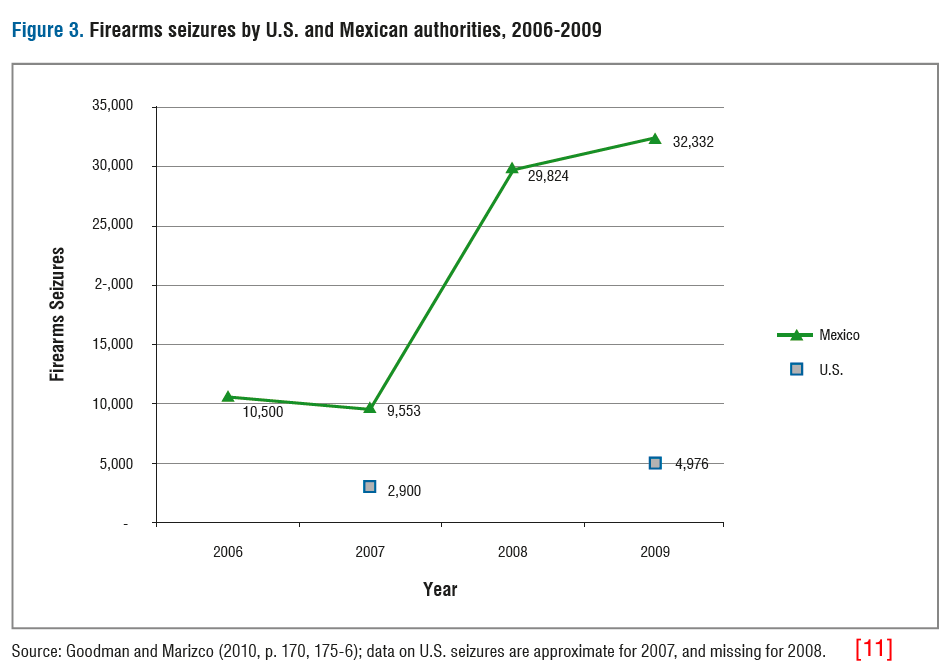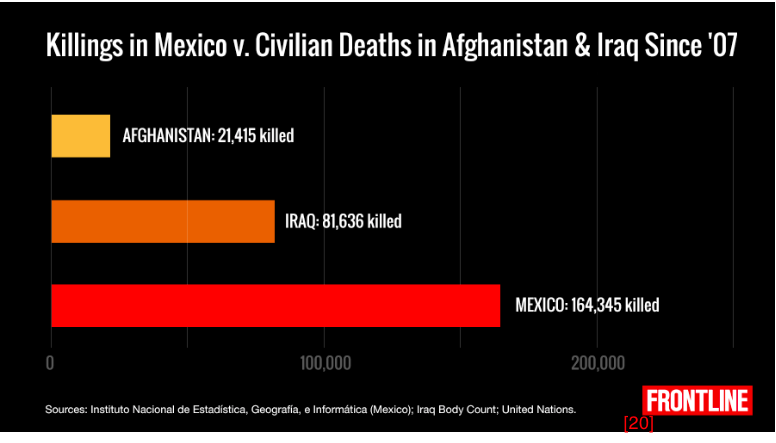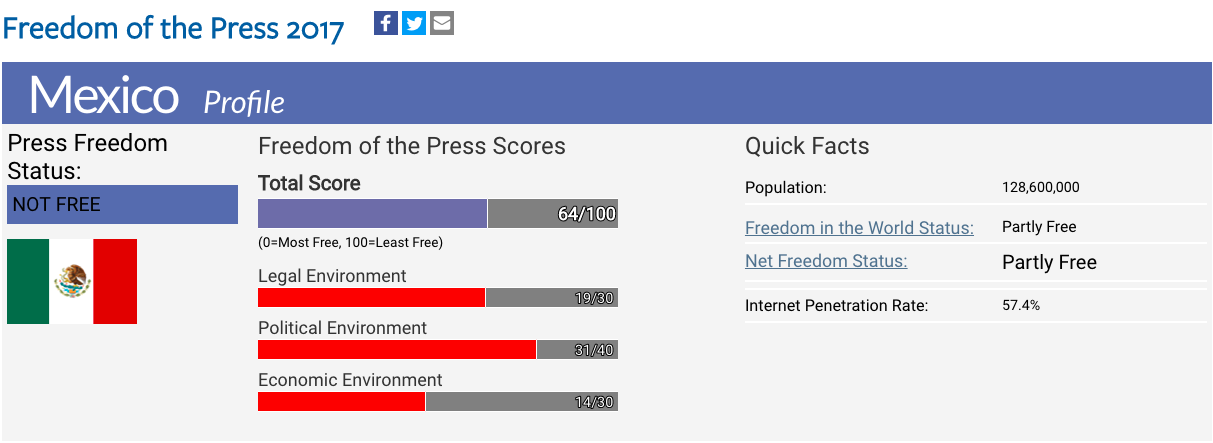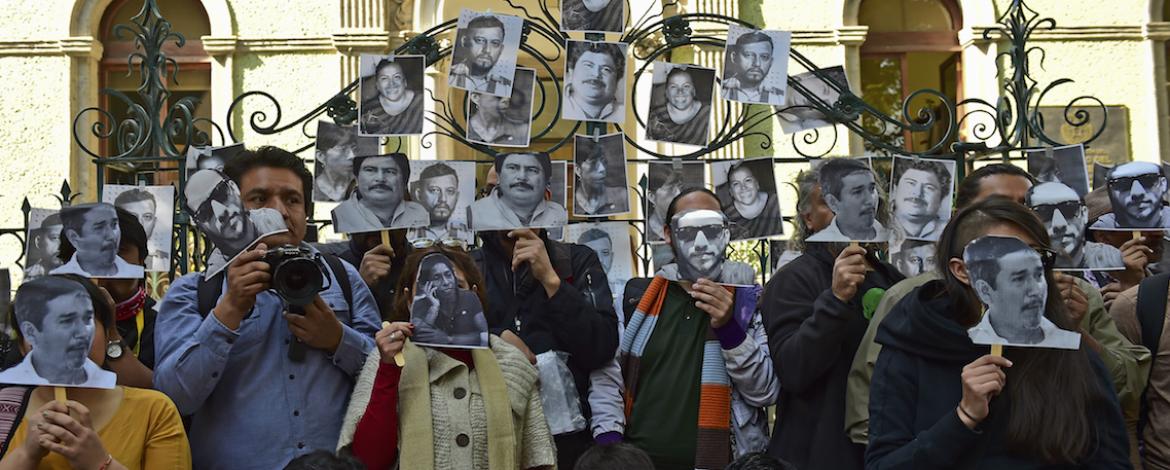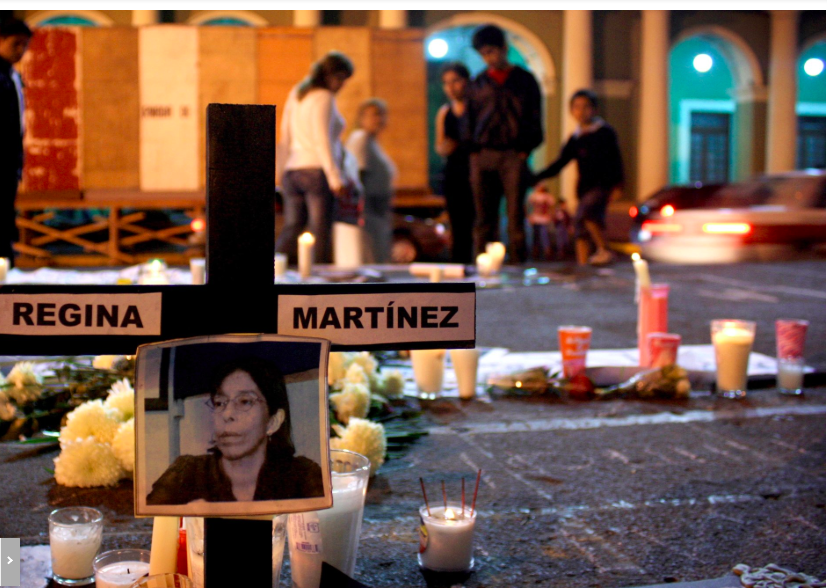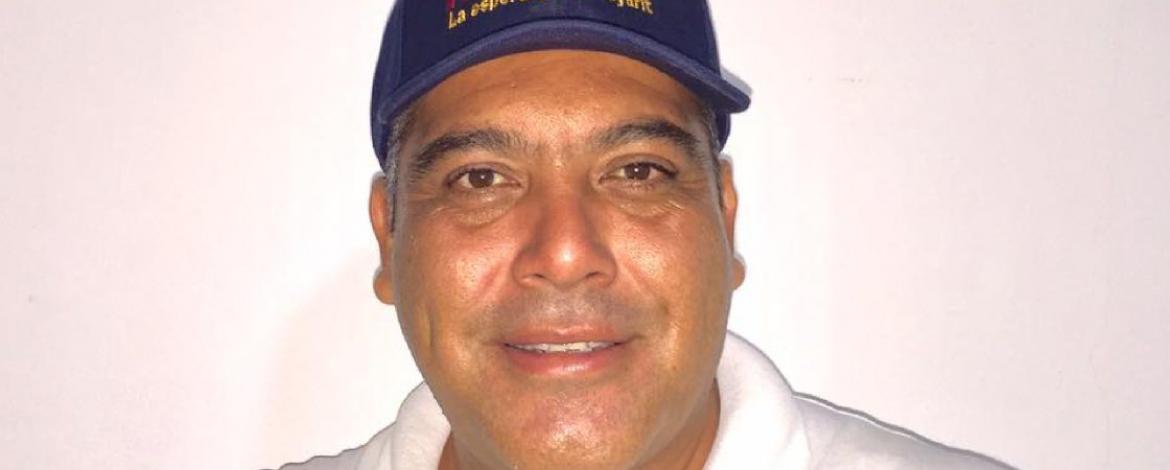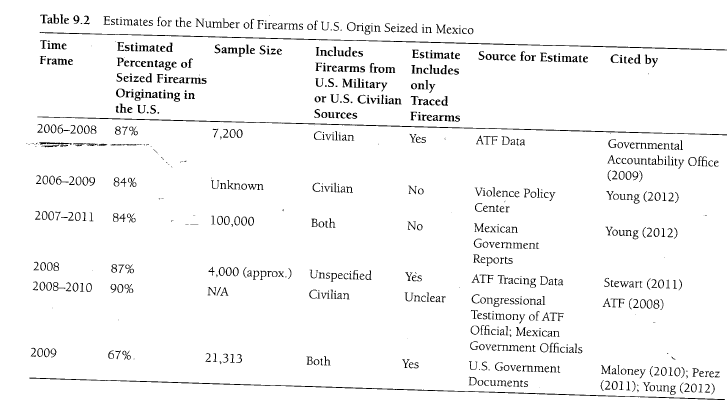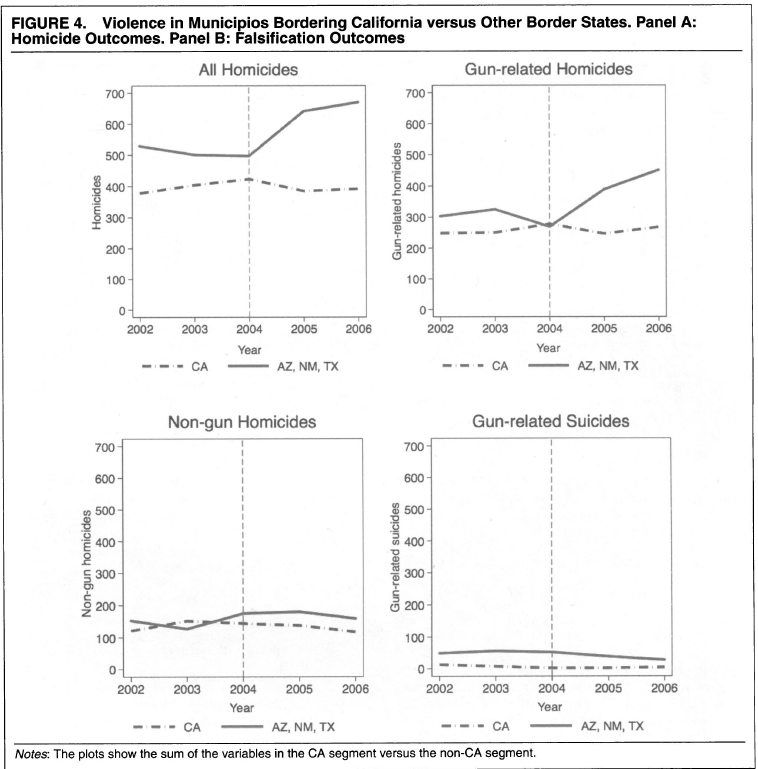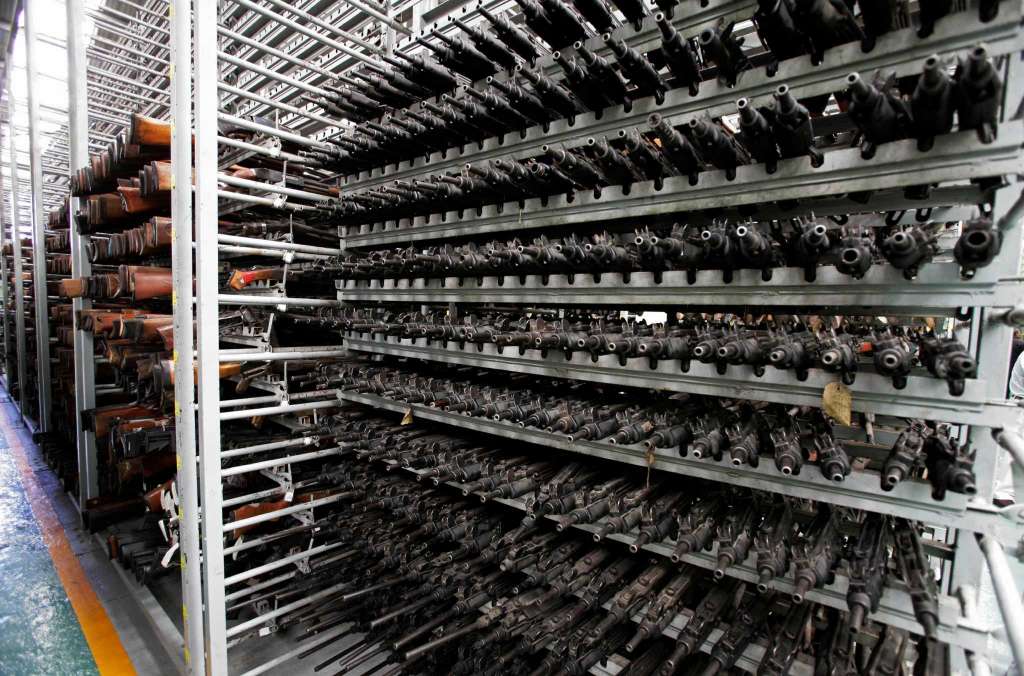GUNS in SOCIETY
Purpose: to provide an introduction of the firearm issue between Mx/U.S.
Argument: The United States (domestic/international) firearm policy affects Mexico.
Sections:
By: Marisela Palafox (Fall 2018)
Argument: The United States (domestic/international) firearm policy affects Mexico.
Sections:
- Quick look at 19th Century Mexico
- What's going on in Mexico?
- What is the U.S. going to do with their mess?
- Final Thoughts
- References
By: Marisela Palafox (Fall 2018)
Section I: 19th Century New Spain (Mexico), setting the tone.
Instability in 19th century -
In 1808, Napoleon Bonaparte enters Spain and deposes the monarchy to place his brother Joseph as king. The ongoing Peninsular War (1808-1814) between Spain (backed by Britain) and France helped fuel Mexico's war for independence. The forced abdication of the Spanish monarchy, did not help the fact that New Spain was going through unrest due to the earlier implementation of the Bourbon reforms and the economic crisis being worsened by the ongoing armed conflict [1].
What were the Bourbon reforms? Policy changes that "attempted to curb contraband commerce, regain control over transatlantic trade, curtail the church's power, modernize state finances to fill depleted royal coffers, and establish tighter political and administrative control within the empire" [2].
While all this is occurring in Europe, New Spain decides to push for its independence (1810-1821). A time where almost all the guns in the world were being produced in Western Europe and keeping afloat the Napoleonic Wars. The Independence movement needed arms and without the capital to buy them, they started giving out promises, that if they managed to seize power they would trade mining concessions and negotiate tariff revenues, commercial policies and government contracts. The "gun poverty" that Mexico faced helped the Independence war last over ten years, hurting directly the population, economy and infrastructure [3].
This issue of having no guns and money perdured after Independence and Mexico armed itself on credit. For instance, "In the mid-1820s they secured two large loans from London firms and spent more than a million pesos of that money on armed boats and firearms" [4].
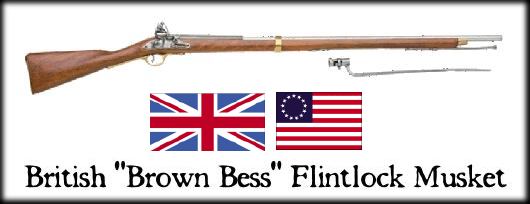 Military Service Dates: 1730-1835, www.gunclassics.com
Military Service Dates: 1730-1835, www.gunclassics.com
The arms they were sold were guns no longer used by the British military like the Brown Bess musket.
After being decommissioned, they were sold in bulk to newly-independent Mexico.
Three years after the London loans, Mexico defaulted on them.
After being decommissioned, they were sold in bulk to newly-independent Mexico.
Three years after the London loans, Mexico defaulted on them.
"The national government would spend the next sixty years in sovereign default, more or less barred from international capital markets, unable to finance the governance of the country, deeply unstable, and compelled to face crisis after crisis with an outmoded and dwindling arsenal" [5].
Timeline (after 1840s)
Spring 1846, Mexican-American War → the U.S. is winning and capture most of Mexico's guns/cannons and destroy it.
1850s-1860s, era of coups, regional rebellions, civil war & foreign occupation
1862-1867, French Intervention, Napoleon III places Archduke Maximillian as Mexico's King - Benito Juárez (president-in-exile) trying to regain power sends agents to American cities to get capital and weapons. Desperations led to drastic measures therefore 30 million dollars in bonds were sold at major discounts.
Spring 1846, Mexican-American War → the U.S. is winning and capture most of Mexico's guns/cannons and destroy it.
- Spring 1848, Mexican Ministry of War states that there is 48 functioning cannons ad 121 muskets
1850s-1860s, era of coups, regional rebellions, civil war & foreign occupation
- Ammunition + firearms flowing into the country mostly from the U.S. and on credit
- Ex. 1854, future Mexican president, Gen. Ignacio Comonfort goes to the U.S. seeking arms to have a rebellion against President Antonio López de Santa Anna. Comonfort finds someone who can loan him money to buy arms, ammunition & a boat and in returns gave half the tariffs of Acapulco's port. His actions ensured the success of the rebellion.
1862-1867, French Intervention, Napoleon III places Archduke Maximillian as Mexico's King - Benito Juárez (president-in-exile) trying to regain power sends agents to American cities to get capital and weapons. Desperations led to drastic measures therefore 30 million dollars in bonds were sold at major discounts.
- Excuse for intervention → Juárez suspension of all interest payments on international debts in 1861
- Buyers (such as J.P. Morgan, Henry Du Pont, etc) knew they would not be given their bonds in time but had secured leverage to have land deals, mining concessions, commercial privileges & railroad projects
- After the recapture of power, creditors wanted repayment
- In 1876, still waiting for repayment, bondholders worked with railroad business colleagues to fund/arm a coup led by Gen. Porfirio Diaz. Diaz governed for the next 30 years → rapid development, profound inequality, foreign ownership of economy
The Mexican 19th century arsenal was in perpetual crisis and decline due to the fact that guns were being reinvented and updated.
Section II: Present
Currently, Mexican violence rates have been at an all time high. What has helped fueled the violence?
Facilitating the violence are foreign firearms being pushed into the Mexican market. Interestingly enough, Mexico has one legal gun store.
Facilitating the violence are foreign firearms being pushed into the Mexican market. Interestingly enough, Mexico has one legal gun store.
"Article 10 of the Mexican constitution says that residents have the right to possess arms in their homes for security and legitimate defense, with the exception of arms prohibited by federal law and those reserved for the exclusive use of the Army, Navy, Air Force and National Guard" [7].
"Strict gun laws can't totally work if a neighboring government has lax laws" [8].
[9]
How many guns are in Mexico? The actual number is unclear but various estimates account that a high percentage of guns are from the U.S.
Vicente Fox Administration (2000-2006) - 2,000 guns were entering Mexico daily [10].
2017 - 1,680,900 (illicit/licit guns held by civilians) [12].
Different ways firearms enter Mexico
- Straw purchasing = where legally qualified purchasers buy weapons from licensed gun dealers or gun shows in border states to re-sell them to smugglers [13].
- U.S. directly sells to Mexican officials, and corrupt officials re-sell into the illegal market [14/15].
- Stockpile of weapons from U.S. & Soviet proxy conflicts are still stored in govermental arsenals across Latin America. Cold-War-era weapons fall in the hands of cartels. Ex. In 2008, it came to light that "light anti-tank weapons and military-grade M433 grenades made in the U.S. and recovered in Mexico came from Honduran military stockpiles" [16].
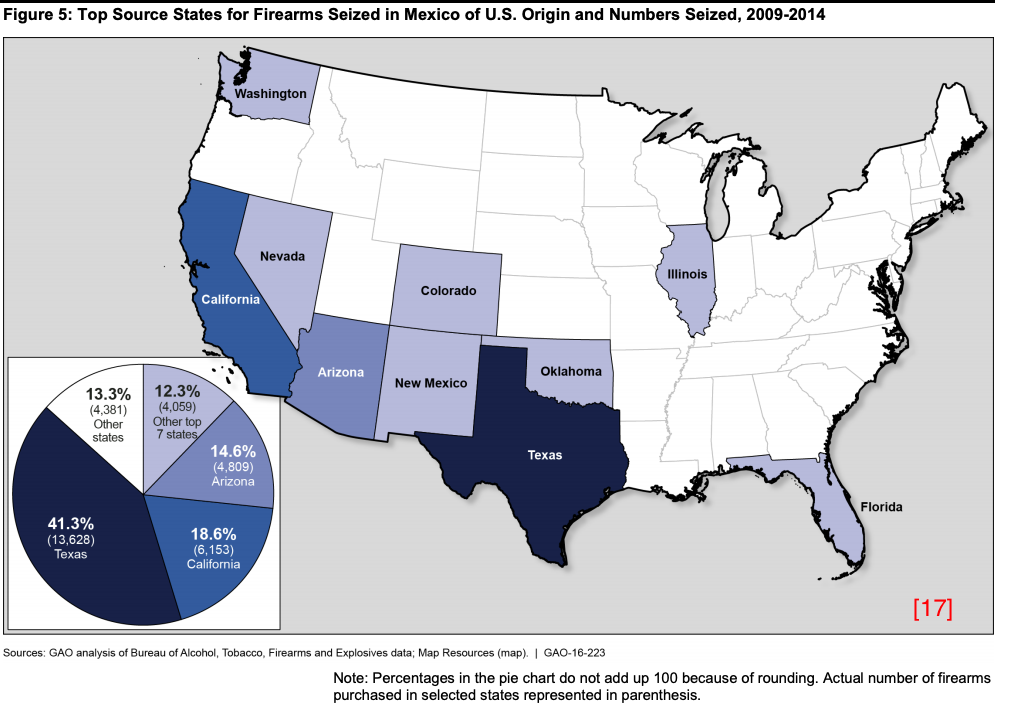
in August 2008, 6 members of the Federal Attorney General's office known as SIEDO had been arrested on suspicion of leaking info to drug traffickers
Dec 2008, approx. 11,500 law enforcement/govt. employees were fined for corruption in the last 2 years (fines, totaled around $300 million). [38]
Dec 2008, approx. 11,500 law enforcement/govt. employees were fined for corruption in the last 2 years (fines, totaled around $300 million). [38]
Grupos Auto-Defensas/ Community Police
In response to the negligence of the Mexican government, many rural communities have decided to take matters into their owns hards and protect themselves. Not only are cartels and the Mexican military utilizing firearms, auto-defense groups have also been purchasing weapons. This has been displayed with the shootouts that occur between these groups and cartels.
|
"Cherán is a town of some 20,000 inhabitants in the highlands of Michoacán, one of the Mexican states that’s suffered most in the drug wars of the last decade" [18]. |
|
But not everything has been peachy, because reports of corruption within these groups have emerged. Corruption from these groups emerge once profits from ilegal markets are encountered. Poverty has been part of Mexican history since colonialism meaning people will be moved by profits to secure a slightt change of living conditions. [19]
"And they started to see that there was a lot of profit to be made if they started to engage in criminal acts, but what happened also with the self-defense forces, especially in Michoacan, is that criminal groups started to penetrate them because they looked at them as being a force multiplier that they could use to expand their territory and push rival drug cartels out of the area." [23]
Journalists have been a main target of gun violence in Mexico due to their reporting and investigating cartel activity. Exposing collusions between government officials and cartel members is a sure death.
EX. "Gumaro Pérez Aguilando was killed in the state of Veracruz. The 35-year-old crime reporter was gunned down while attending a Christmas party at his son's elementary school". [21]
Ex. "April 28, 2012, a day after publishing stories on the mysterious death of a political official and the arrest of nine police officers working for drug traffickers, Ms. Martínez was found strangled and beaten to death on her bathroom floor". [22]
Ex. Jesús Alejandro Márquez Jiménez, the founder and editor of the news website Orión Informativo and a former reporter for the local newspaper Crítica, bullet-riddled body was found on Dec 2nd, 2018 (The same day the new Mexican President Andres Manuel Lopez Obrador was being sworn into office. [25].
Ex. "April 28, 2012, a day after publishing stories on the mysterious death of a political official and the arrest of nine police officers working for drug traffickers, Ms. Martínez was found strangled and beaten to death on her bathroom floor". [22]
Ex. Jesús Alejandro Márquez Jiménez, the founder and editor of the news website Orión Informativo and a former reporter for the local newspaper Crítica, bullet-riddled body was found on Dec 2nd, 2018 (The same day the new Mexican President Andres Manuel Lopez Obrador was being sworn into office. [25].
These groups are not the only one's arming themselves, individual city residents are also looking into purchasing weapons as a way to help deter violence from cartels. It is reported that for every 1 legal gun sold firearm there are 15 illegal ones. [24]
|
|
The influx of firearms and other weapons have allowed for fear to be a big part of Mexican livelihoods and without power (linked to firearms/money) all crimes go without investigation and are eventually pushed under the rug.
For example in 2008, the Palomas, Chihuahua police force fled with their chief to seek shelter in the United States. [26] Cartels have access to fancier weaponry compared to regular polie officials ensuring bloodbaths when there is confrontation.
Like in 19th century Mexico, the modern day state can do little to alter the political economy of the arms trade equipping rivals of the state. [27]
For example in 2008, the Palomas, Chihuahua police force fled with their chief to seek shelter in the United States. [26] Cartels have access to fancier weaponry compared to regular polie officials ensuring bloodbaths when there is confrontation.
Like in 19th century Mexico, the modern day state can do little to alter the political economy of the arms trade equipping rivals of the state. [27]
Section III: U.S. Response
[28]
President Felipe Calderon: The United States is jointly responsible for what is happening to us... In that joint responsbility the U.S. government has a lot of work to do. We cannot confront this problem alone. [29]
America's Paradoxical Trajectory, post-911 America's obsession with "security" has allowed for federal gun laws to become looser
1934, National Firearms Act = Fully automated weapons had to be federally licensed
1968, The Gun Control Act defined prohibited purchases
1993, The Brady Handgun Violence Prevention Act = Instated a criminal background database called the National Instant Criminal Background Check System (NICS)
1994, The Violent Crime Control & Law Enforcement Act
2007, Congress passes the NICS Improvement Amendments Act (in response to the Virginia Tech Massacre) = imposes a cut in federal law enforcement funds if records are not passed over to NICS
But there is still no law that bans gunshow loopholes (where a good percentage of guns are bought to be shipped to Mexico). [30]
2004, Expiration of the 10 year Federal Assault Weapons Ban - "lifted the prohibition on domestic sales of military style firarms in America." [31]
- Mexican Municipios lying along the non-California segment of the border experiences an increase of 38% in homicides after 2004. [32]
- Municipios near Texas, Arizona and New Mexico saw a 60% increase in homicides compared to municipios 100 miles away from the border
The end of the federal ban demonstrated how U.S. domestic policy was affecting Mexico. So what actions did the U.S. take?
The end of the ban was not the only damaging policy, NAFTA also hurt Mexico.
- decreased barriers→ Drug Trafficking Organizations adopt new strategies to increase profits& effectiveness in all stages of the supply chain [41]
- corporate expansion + increased economic activity = gun violence in Mexico and Canada increased. [42,43]
A look into the Merida Initiative & Operation Fast and Furious
October 22, 2007 - The U.S. & Mexico announce the Merida Initiative
Funded throught the State Department & USAID Foreign Assistance
"The types of equipment provided under the Merida Initiative range from helicopters to the Federal Police in the early years of Merida, to X-ray scanning equipment at ports of entry, to protective equipment for the forces that dismantle clandestine drug labs, to IT equipment for courtrooms to ensure the implementation of the accusatorial criminal justice system." [35]
This initiative is broken down into 4 pillars of cooperation: [36]
- "multiyear proposal for $1.4 billion in U.S. assistance to Mexico and Central America aimed at combating drug trafficking and organized crime." [34]
Funded throught the State Department & USAID Foreign Assistance
"The types of equipment provided under the Merida Initiative range from helicopters to the Federal Police in the early years of Merida, to X-ray scanning equipment at ports of entry, to protective equipment for the forces that dismantle clandestine drug labs, to IT equipment for courtrooms to ensure the implementation of the accusatorial criminal justice system." [35]
This initiative is broken down into 4 pillars of cooperation: [36]
- Disrupt Capacity of Organized Crime to Operate
- Institutionalize Capacity to Sustain Rule of Law
- Create a 21st Century Border Structure
- Build Strong and Resilient Communities
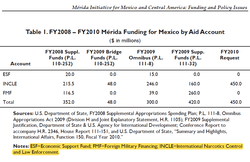
This table displays the millions of dollars given to Mexico by the United States. [37]
Problems?
- Monitoring progress
- Interagency coordination = challenges of getting U.S. agencies to work together
- agencies: State Dept., USAID, Dept. of Homeland Security , Dept. of Justice & Dept. of Defense
- No domestic side to this Initiative
- "it may prove difficult for Congress to monitor the degree to which the U.S. government is fulfillling its domestic pledges under the Merida Initiative" [39]
Operation Fast & Furious (OFF)
Aim: Smuggled firearms would be traced after being released.
Purpose: "to allow illegally purchased American firearms to be delivered to drug trafficking organizations (DTOs) in Mexico in the hope of reconstructing how firearms are smuggled into Mexico"
Process: Identifying "straw purchasers", & observing to whom where the weapons delivered to
Aim: Smuggled firearms would be traced after being released.
Purpose: "to allow illegally purchased American firearms to be delivered to drug trafficking organizations (DTOs) in Mexico in the hope of reconstructing how firearms are smuggled into Mexico"
Process: Identifying "straw purchasers", & observing to whom where the weapons delivered to
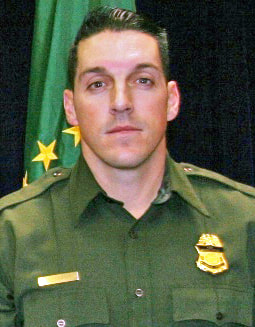 Via the Officer Down Memorial Page [44]
Via the Officer Down Memorial Page [44]
So how did the American public find out about this Operation?
The death of U.S. border agent Brian Terry on December 14, 2010
Shot & killed near Rico Rio, AZ - attempting to stop a group of armed men. Suspects were preying on undocumented immigrants to rob them.
Agent Terry was struck in the pelvis by a round fired by a suspect armed with an AK-47. [45]
Firearms involved by the criminals were linked to OFF [46]
If it wasn't for this death, OFF would have not received media coverage and the creators would have had no accountability.
The death of U.S. border agent Brian Terry on December 14, 2010
Shot & killed near Rico Rio, AZ - attempting to stop a group of armed men. Suspects were preying on undocumented immigrants to rob them.
Agent Terry was struck in the pelvis by a round fired by a suspect armed with an AK-47. [45]
Firearms involved by the criminals were linked to OFF [46]
If it wasn't for this death, OFF would have not received media coverage and the creators would have had no accountability.
"Immediately upon the release of this information to the public, the number of calls for an investigation into the government's handling of efforts to stem the flow of illegal firearms into Mexico grew" [47]
Deaths w/ OFF guns [48]
September 2, 2009 - Shooting in Cuidad Juarez , young men at a rehab center were murdered
January 30, 2010 - Twenty armed men fired upon a group of young adults at birthday party in Villas de Salvarcar
September 2, 2009 - Shooting in Cuidad Juarez , young men at a rehab center were murdered
January 30, 2010 - Twenty armed men fired upon a group of young adults at birthday party in Villas de Salvarcar
Timeline: (Via CNN)
This timeline provides a glance at what happened to OFF after the murder of Agent Terry.
October 31, 2009 - Phoenix-based ATF agents get a tip from a local gun shop about suspicious purchases of assault rifles by four individuals. The agents begin investigating whether the individuals were "straw purchasers" working for a large-scale illegal gun trafficking organization. The probe later comes to be known as Operation Fast and Furious.
December 14, 2010 - Terry is killed during a shootout in the Arizona desert. Three of the men involved in the shootout are later convicted of murder. Two other associates are later charged with conspiracy and firearms offenses in connection with the killing. One other suspect is arrested in April 2017 and the last suspect is arrested in October 2017.
January 25, 2011 - The US Attorney's office in Arizona announces that 34 suspects have been indicted for firearms trafficking from the United States to Mexico. The DOJ inspector general later reports that 20 of the defendants were caught via Fast and Furious.
January 27, 2011 - Senator Chuck Grassley of the Senate Judiciary Committee sends a letter to Kenneth Melson, acting director of the ATF, regarding the agency's firearms trafficking investigation and allegations that the ATF allowed hundreds of assault weapons to be smuggled to Mexico. He notes that two of the guns may have been used by Terry's killers.
March 3, 2011 - Melson announces the formation of a panel to "review the bureau's current firearms trafficking strategies employed by field division managers and special agents."
April 1, 2011 - The House Oversight Committee issues a subpoena for ATF documents.
May 3, 2011 - Holder testifies before the House Judiciary Committee. He says that he had first heard of Fast and Furious only over the past few weeks.
June 2011 - Whistleblowers testify on Capitol Hill.
July 12, 2011 - Sources tell CNN that an estimated 1,400 weapons were lost by the ATF.
July 26, 2011 - The House Oversight Committee holds a second hearing.
August 30, 2011 - The DOJ removes Melson as acting director of the ATF and he is reassigned to the Office of Legal Policy. B. Todd Jones takes Melson's place as acting director of the ATF.
October 12, 2011 - The House Oversight Committee issues a subpoena for communications from Holder and other DOJ officials related to the federal gunrunning operation.
November 8, 2011 - Holder testifies before the Senate Judiciary Committee. "This operation was flawed in its concept and flawed in its execution.," he says.
February 1, 2012 - Terry's family files a $25 million wrongful death lawsuit in federal court. The lawsuit is later dismissed.
February 2, 2012 - Holder testifies before the House Oversight Committee. He says that DOJ officials will be held accountable for Fast and Furious.
June 12, 2012 - Holder rejects calls for his resignation from Republicans during a House Oversight Committee hearing.
June 20, 2012 - Republicans on the House Oversight Committee recommend that Holder be cited for contempt of Congress for failing to turn over documents relating to Fast and Furious.They make the recommendation after President Barack Obama asserts executive privilege over some documents sought by the committee.
June 28, 2012 - The House of Representatives votes 255-67 to hold Holder in criminal contempt of Congress. This is the first time in American history that the head of the Justice Department has been held in contempt by Congress.
July 6, 2012 - The White House and the DOJ announce that Holder will not face criminal prosecution under the contempt of Congress citation.
July 31, 2012 - The first of a three-part joint Congressional report is released. The report prompts the resignation of William Hoover, the deputy director of the ATF.
August 13, 2012 - The House Oversight Committee files a civil lawsuit against Holder over Fast and Furious documents. On January 19, 2016, a federal judge orders the DOJ to release thousands of pages of documents.
September 19, 2012 - The DOJ Inspector General releases a report on the operation, concluding that Holder was not informed of Fast and Furious until 2011. The inspector general finds 14 employees of the ATF and the DOJ responsible for management failures. After the report is released, Melson retires and a deputy assistant attorney general resigns.
December 12, 2012 - The DOJ announces that a gun trafficker, Jaime Avila has been sentenced to 57 months in prison for his role in buying weapons that were found at the site of Terry's shooting death.
February 10, 2014 - Manuel Osorio-Arellanes is sentenced to 30 years in prison for first-degree murder, in connection with Terry's death.
November 3, 2014 - Under court order, the Justice Department turns over nearly 65,000 pages of Fast and Furious-related documents. The documents were previously withheld under the Obama administration's claim of executive privilege.
October 1, 2015 - Two additional suspects in Terry's death, Jesus Leonel Sanchez-Meza and Ivan Soto-Barraza, are found guilty of first-degree murder and other charges. They later receive life sentences.
April 8, 2016 - The DOJ releases additional documents pertaining to Fast and Furious, as ordered by a federal judge.April 12, 2017 - Heraclio Osorio-Arellanes, a fugitive cartel member wanted in connection with Terry's death, is arrested in Mexico.
October 2017 - Jesus Rosario Favela Astorga, the last of seven suspects wanted in connection with Terry's death, is arrested in Mexico
This timeline provides a glance at what happened to OFF after the murder of Agent Terry.
October 31, 2009 - Phoenix-based ATF agents get a tip from a local gun shop about suspicious purchases of assault rifles by four individuals. The agents begin investigating whether the individuals were "straw purchasers" working for a large-scale illegal gun trafficking organization. The probe later comes to be known as Operation Fast and Furious.
December 14, 2010 - Terry is killed during a shootout in the Arizona desert. Three of the men involved in the shootout are later convicted of murder. Two other associates are later charged with conspiracy and firearms offenses in connection with the killing. One other suspect is arrested in April 2017 and the last suspect is arrested in October 2017.
January 25, 2011 - The US Attorney's office in Arizona announces that 34 suspects have been indicted for firearms trafficking from the United States to Mexico. The DOJ inspector general later reports that 20 of the defendants were caught via Fast and Furious.
January 27, 2011 - Senator Chuck Grassley of the Senate Judiciary Committee sends a letter to Kenneth Melson, acting director of the ATF, regarding the agency's firearms trafficking investigation and allegations that the ATF allowed hundreds of assault weapons to be smuggled to Mexico. He notes that two of the guns may have been used by Terry's killers.
March 3, 2011 - Melson announces the formation of a panel to "review the bureau's current firearms trafficking strategies employed by field division managers and special agents."
April 1, 2011 - The House Oversight Committee issues a subpoena for ATF documents.
May 3, 2011 - Holder testifies before the House Judiciary Committee. He says that he had first heard of Fast and Furious only over the past few weeks.
June 2011 - Whistleblowers testify on Capitol Hill.
July 12, 2011 - Sources tell CNN that an estimated 1,400 weapons were lost by the ATF.
July 26, 2011 - The House Oversight Committee holds a second hearing.
August 30, 2011 - The DOJ removes Melson as acting director of the ATF and he is reassigned to the Office of Legal Policy. B. Todd Jones takes Melson's place as acting director of the ATF.
October 12, 2011 - The House Oversight Committee issues a subpoena for communications from Holder and other DOJ officials related to the federal gunrunning operation.
November 8, 2011 - Holder testifies before the Senate Judiciary Committee. "This operation was flawed in its concept and flawed in its execution.," he says.
February 1, 2012 - Terry's family files a $25 million wrongful death lawsuit in federal court. The lawsuit is later dismissed.
February 2, 2012 - Holder testifies before the House Oversight Committee. He says that DOJ officials will be held accountable for Fast and Furious.
June 12, 2012 - Holder rejects calls for his resignation from Republicans during a House Oversight Committee hearing.
June 20, 2012 - Republicans on the House Oversight Committee recommend that Holder be cited for contempt of Congress for failing to turn over documents relating to Fast and Furious.They make the recommendation after President Barack Obama asserts executive privilege over some documents sought by the committee.
June 28, 2012 - The House of Representatives votes 255-67 to hold Holder in criminal contempt of Congress. This is the first time in American history that the head of the Justice Department has been held in contempt by Congress.
July 6, 2012 - The White House and the DOJ announce that Holder will not face criminal prosecution under the contempt of Congress citation.
July 31, 2012 - The first of a three-part joint Congressional report is released. The report prompts the resignation of William Hoover, the deputy director of the ATF.
August 13, 2012 - The House Oversight Committee files a civil lawsuit against Holder over Fast and Furious documents. On January 19, 2016, a federal judge orders the DOJ to release thousands of pages of documents.
September 19, 2012 - The DOJ Inspector General releases a report on the operation, concluding that Holder was not informed of Fast and Furious until 2011. The inspector general finds 14 employees of the ATF and the DOJ responsible for management failures. After the report is released, Melson retires and a deputy assistant attorney general resigns.
December 12, 2012 - The DOJ announces that a gun trafficker, Jaime Avila has been sentenced to 57 months in prison for his role in buying weapons that were found at the site of Terry's shooting death.
February 10, 2014 - Manuel Osorio-Arellanes is sentenced to 30 years in prison for first-degree murder, in connection with Terry's death.
November 3, 2014 - Under court order, the Justice Department turns over nearly 65,000 pages of Fast and Furious-related documents. The documents were previously withheld under the Obama administration's claim of executive privilege.
October 1, 2015 - Two additional suspects in Terry's death, Jesus Leonel Sanchez-Meza and Ivan Soto-Barraza, are found guilty of first-degree murder and other charges. They later receive life sentences.
April 8, 2016 - The DOJ releases additional documents pertaining to Fast and Furious, as ordered by a federal judge.April 12, 2017 - Heraclio Osorio-Arellanes, a fugitive cartel member wanted in connection with Terry's death, is arrested in Mexico.
October 2017 - Jesus Rosario Favela Astorga, the last of seven suspects wanted in connection with Terry's death, is arrested in Mexico
Section IV: Thoughts
The Many analysts have advocated for: improving regulations to combat 'straw purchases', improve how weapons attractive to criminal groups are marketed & enacting an efficient assault weapons ban. [49]
The sad reality is guns will be flowing into Mexico and more innocent lives will be taken away due to this complex issues involving drugs, weapons & profit. The chance to be a "somebody" with lots of money, gives desperate people incentives, in a country without many safety nets for its poor/rural citizens, to join the black market.
My site was intended as an introduction to the relations of guns and Mexico with a specific look into the 21st century. The United States has played a vital role in the violence in Mexico with trade treaties, monitoring systems and in essence, their relaxed firearms legislation (just look at the many interpretations of the 2nd Amendment every state has). And this problem is not only a Mexican issue, it is an issue affecting both North American nations, a quick look at the firearm debates in the U.S. will inform you. This issue has been plaguing the United States and affecting its minority population the most (Black and latino families). And as the violence soars, who ends getting the short end of the stick? The vulnerable (peoples without power, privilege, the marginalized and forgotten). Policy makers needs to take into account the trauma that comes with gun violence regardless of which of the border you are on. Rather than trying to have legislation attack firearm avaliability or the drug trade directly, there should be a push to also look at policy that tries to ease the issue by providing solutions to other underlying problems such as lack of opportunities, poverty, and lack of safety nets.
GRAPHIC WARNING FOR IMAGES BELOW [50]
The sad reality is guns will be flowing into Mexico and more innocent lives will be taken away due to this complex issues involving drugs, weapons & profit. The chance to be a "somebody" with lots of money, gives desperate people incentives, in a country without many safety nets for its poor/rural citizens, to join the black market.
My site was intended as an introduction to the relations of guns and Mexico with a specific look into the 21st century. The United States has played a vital role in the violence in Mexico with trade treaties, monitoring systems and in essence, their relaxed firearms legislation (just look at the many interpretations of the 2nd Amendment every state has). And this problem is not only a Mexican issue, it is an issue affecting both North American nations, a quick look at the firearm debates in the U.S. will inform you. This issue has been plaguing the United States and affecting its minority population the most (Black and latino families). And as the violence soars, who ends getting the short end of the stick? The vulnerable (peoples without power, privilege, the marginalized and forgotten). Policy makers needs to take into account the trauma that comes with gun violence regardless of which of the border you are on. Rather than trying to have legislation attack firearm avaliability or the drug trade directly, there should be a push to also look at policy that tries to ease the issue by providing solutions to other underlying problems such as lack of opportunities, poverty, and lack of safety nets.
GRAPHIC WARNING FOR IMAGES BELOW [50]
Section V - References
Print Sources
Bowden, C. (2011). Murder city: Ciudad Juárez and the global economys new killing fields. New York: Nation Books.
Cook, P., Cukier, W., Krause, K., Sheptycki, J., & Edwards, A. (2009). The illicit firearms trade in North
America. Criminology & Criminal Justice, 9(3), 265-286.
Delay, B. (2013). How Not to Arm a State. American Guns and the Crisis of Governance in Mexico, Nineteenth and Twenty-First Centuries. Southern California Quarterly, 95(1), 5-23.
Dube, Arindrajit, Dube, Oeindrila, & Garcia-Ponce, Omar. (2013). Cross-border spillover: U.S. gun laws and violence in Mexico. American Political Science Review, 107(3), 397-417.
McDougal, Topher, Shirk, David, Muggah, Robert & Patterson J.H (2013). The Way of the Gun: Estimating Firearms Traffic Accross the U.S.-Mexico Border (University of Sand Diego Trans-Border Institute and Agarape Institute).
Seelke, C. R., & Beittel, J. S. (2009). Mérida initiative for Mexico and Central America: Funding and policy issues (pp. 1-28) (United States, Congressional Research Service). Washington, D.C.: Congressional Research Service, Library of Congress.
Sides, J. C., Vanderleeuw, J. M., & Joseph, J. M. (2016). The Failure of 'Operation Fast and Furious' and the Complexity of Firearms Trafficking into Mexico. In G. H. Utter (Ed.), Guns and contemporary society. the past, present, and future of firearms and firearm policy (pp. 197-220). Santa Barbara, CA: Praeger an imprint of ABC-CLIO, LLC.
Weinberg, B. (2008). Guns: The U.S. Threat to Mexican National Security. NACLA Report on the Americas, 41(2), 21-26.
Bowden, C. (2011). Murder city: Ciudad Juárez and the global economys new killing fields. New York: Nation Books.
Cook, P., Cukier, W., Krause, K., Sheptycki, J., & Edwards, A. (2009). The illicit firearms trade in North
America. Criminology & Criminal Justice, 9(3), 265-286.
Delay, B. (2013). How Not to Arm a State. American Guns and the Crisis of Governance in Mexico, Nineteenth and Twenty-First Centuries. Southern California Quarterly, 95(1), 5-23.
Dube, Arindrajit, Dube, Oeindrila, & Garcia-Ponce, Omar. (2013). Cross-border spillover: U.S. gun laws and violence in Mexico. American Political Science Review, 107(3), 397-417.
McDougal, Topher, Shirk, David, Muggah, Robert & Patterson J.H (2013). The Way of the Gun: Estimating Firearms Traffic Accross the U.S.-Mexico Border (University of Sand Diego Trans-Border Institute and Agarape Institute).
Seelke, C. R., & Beittel, J. S. (2009). Mérida initiative for Mexico and Central America: Funding and policy issues (pp. 1-28) (United States, Congressional Research Service). Washington, D.C.: Congressional Research Service, Library of Congress.
Sides, J. C., Vanderleeuw, J. M., & Joseph, J. M. (2016). The Failure of 'Operation Fast and Furious' and the Complexity of Firearms Trafficking into Mexico. In G. H. Utter (Ed.), Guns and contemporary society. the past, present, and future of firearms and firearm policy (pp. 197-220). Santa Barbara, CA: Praeger an imprint of ABC-CLIO, LLC.
Weinberg, B. (2008). Guns: The U.S. Threat to Mexican National Security. NACLA Report on the Americas, 41(2), 21-26.
Online sources:
- www.history.com/topics/mexico/mexico-timeline
- http://www.oxfordbibliographies.com/view/document/obo-9780199766581/obo-9780199766581-0043.xml
- Lopez, G. (2016, January 14). Where do Mexican drug cartels get their guns? The US. VOX. Retrieved December 12, 2018, from https://www.vox.com/2016/1/14/10771628/gun-violence-america-mexico
- https://www.gao.gov/assets/680/674570.pdf
- https://www.youtube.com/watch?v=SrPBdLiqMb0
- https://www.businessinsider.com/autodefensas-causing-violence-in-guerrero-and-michoacan-in-mexico-2016-12
- https://www.pbs.org/wgbh/frontline/article/the-staggering-death-toll-of-mexicos-drug-war/
- https://www.npr.org/sections/parallels/2017/12/22/572822696/number-of-journalists-killed-in-mexico-reaches-historical-high-report-says
- https://www.nytimes.com/2017/04/29/world/americas/veracruz-mexico-reporters-killed.html
- https://www.youtube.com/watch?v=aEu6BDmLWsU
- https://rsf.org/en/news/mexican-journalist-murdered-same-day-presidents-inauguration
- https://mx.usembassy.gov/our-relationship/policy-history/the-merida-initiative/five-key-points-to-understanding-the-merida-initiative/
- https://mx.usembassy.gov/our-relationship/policy-history/the-merida-initiative/
- https://www.odmp.org/officer/20596-border-patrol-agent-brian-a-terry
- https://www.mysanantonio.com/news/us-world/border-mexico/article/Photos-show-destruction-from-10-years-of-Mexican-6621726.php#photo-8910077
